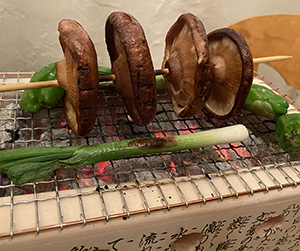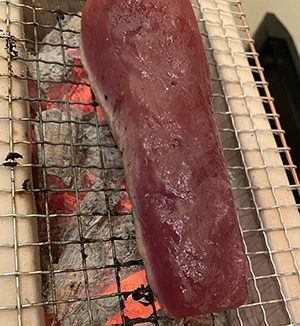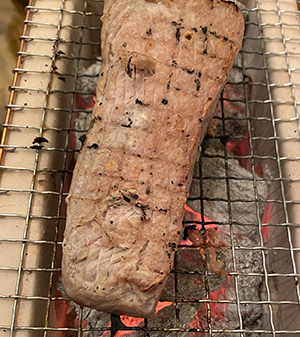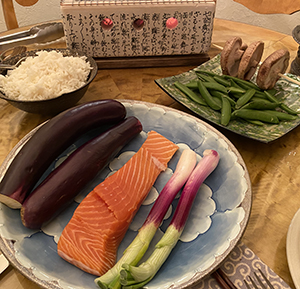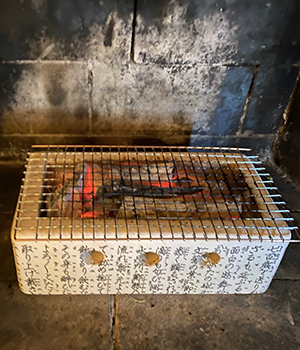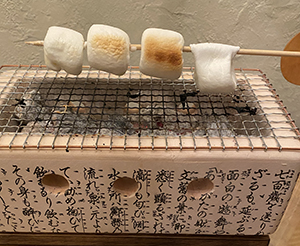WARNING: You’ll probably get this for yourself. But it really is a great gift, too.
December 3, 2024. For me, the binchotan grill was one of the revelations of the pandemic lockdown. Indoor restaurant dining was banned last winter, so I found my layered-for-warmth self dining out on the sidewalk in front of the always totally wonderful Dirt Candy in New York’s East Village. Out came this tiny, very cool looking ceramic grill, grilling a couple of sweet potatoes. Right on our tabletop.
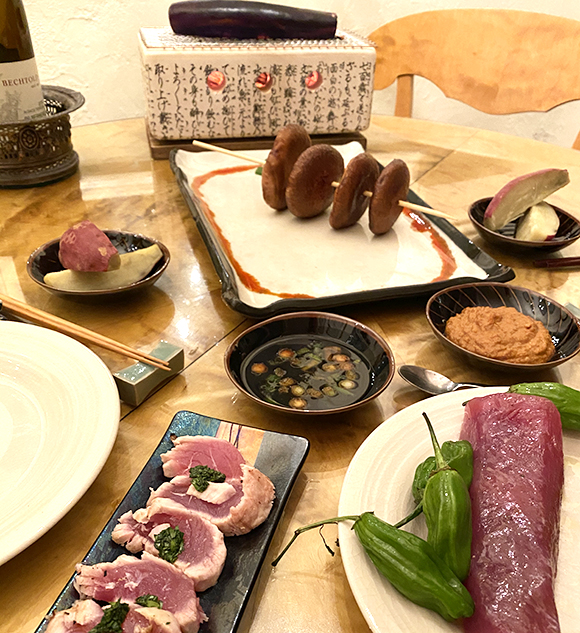
On the grill surface, the cooking temperature was near pizza oven hot. A foot or two away, it was merely very warm. A very small quantity of the exotic hardwood charcoal, also called binchotan charcoal, wasn’t just burning at a screaming hot temperature – it was burning without any smoke. None. Which meant I could grill at home – without dressing for skiing to use the old Weber out on the terrace. For $99, this cute little ceramic grill from Japan was a gift from, well, Japan. Where they’re used inside yakitori restaurants for quick, DIY grilling.
The Catch: NO FAT
I enjoyed truly no-smoke, no-fumes indoor grilling right out of the box. I grilled vegetables and seared very lean, no-fat tuna. As you can see, it all turned out beautifully. And quickly. This is not Slower cooking. Pay attention and turn that mushroom or slice of eggplant before it becomes charcoal.
Things went so well and so easily that I lit my little grill again a few days later. This time, I grilled salmon. Bad idea – because there’s a thick layer of fat between the skin and the flesh of this fish. In a few seconds and without warning, the fat was vaporized and an-ever expanding cloud of salmon fat smoke filled the room. The result was salmon-smoked house, not house-smoked salmon.
I averted disaster by quickly opening windows and putting the grill in the fireplace with an open flu. Please learn from my mistake. You can cook anything on the binchotan – but do it outdoors or in the fireplace if it’s got fat.
I used the authentic Kishu Pro Grade Japanese Binchotan BBQ Charcoal. It’s made from a particular kind of oak tree that grows in a particular forest in a particular region of Japan. They’ve been producing it there for centuries. It is as good as advertised. It is not Cheaper – but because things cook in a few minutes over a few small logs that will burn for hours, you can re-use the logs several times. When the grilling is finished, just put a lid over the grill to eliminate the oxygen supply.
You can also use Pok Pok Thaan Thai Style Charcoal Logs. This the charcoal that was used at Dirt Candy. It’s a lot cheaper. I can tell you it does a great job of cooking. But I experienced it outdoors, where a small amount of smoke might not be detectable. It sure looked smoke-free, but I haven’t tried tried it myself on my dining table.
To learn everything there is to know about this style of cooking, you really want the recipes and instructions in Robata: Japanese Home Grilling. Recipes for vegetables, fish, meats, poultry. But not marshmallows.
